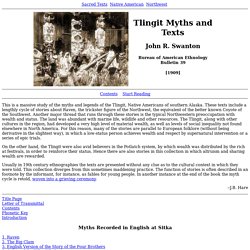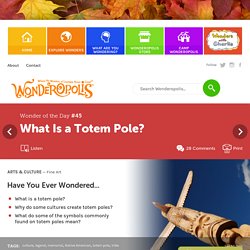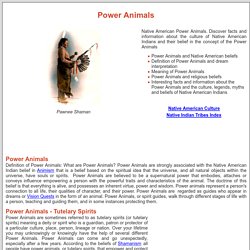

Mytotempole. Database Passwords. Britannica School. Britannica School. Britannica School. WBO Student. WBO Student. Tlingit Tribe: Facts, Clothes, Food and History. Facts about the Tlingit TribeThis article contains fast, fun facts and interesting information about the Tlingit Native American Indian tribe.

Find answers to questions like where did the Tlingit tribe live, what clothes did they wear and what food did they eat? Discover what happened to the Tlingit tribe with facts about their history. Facts about the Tlingit Native Indian TribeThe Tlingit people were organized into settlements and communities, rather than tribes. Tlingit society was multi-layered involving social classes, kin ties, and territorial units. Tlingit. The Tlingit People - Introduction. Tlingit. Tlingit Myths and Texts Index. Sacred Texts Native American Northwest Contents Start Reading This is a massive study of the myths and legends of the Tlingit, Native Americans of southern Alaska.

These texts include a lengthly cycle of stories about Raven, the trickster figure of the Northwest, the equivalent of the better known Coyote of the Southwest. Another major thread that runs through these stories is the typical Northwestern preoccupation with wealth and status. The land was abundant with marine life, wildlife and other resources. On the other hand, the Tlingit were also avid believers in the Potlatch system, by which wealth was distributed by the rich at festivals, in order to reinforce their status. Usually in 19th century ethnographies the texts are presented without any clue as to the cultural context in which they were told. --J.B. Title PageLetter of TransmittalContentsPhonetic KeyIntroduction Myths Recorded in English at Sitka 1. Myths Recorded in English at Wrangell 31. Texts 89. Haines Sheldon Museum.
Chilkat Tlingits at a potlatch hosted in Klukwan in 1900.

"There is an old story that says how some strange people came from the western ocean. Among them were two sisters. They landed on Dall Island in Southeastern Alaska. There the sisters met and married men whose people were coming down the rivers from interior North America. One sister went with her family to the Queen Charlotte Islands. Schwatka, Skondoo, and Monkey John, circa 1907.
Ultimate Guide To Spirit Animals, Power Animals & Totems. Totem Animals - A Guide. What Is a Totem Pole? Totem poles are sculptures carved from large trees, such as the Western Red Cedar.

Totem pole history. Meaning of Colors. Meaning of ColorsThe meaning of colors was important to Native American Indians as each color held a special sacred symbolism.

The meaning of colors changed according to the purpose they were put to. Totem pole colors. Power Animals. Power AnimalsDefinition of Power Animals: What are Power Animals?

Power Animals are strongly associated with the Native American Indian belief in Animism that is a belief based on the spiritual idea that the universe, and all natural objects within the universe, have souls or spirits. Power Animals are believed to be a supernatural power that embodies, attaches or conveys influence empowering a person with the powerful traits and characteristics of the animal. The doctrine of this belief is that everything is alive, and possesses an inherent virtue, power and wisdom. Power animals represent a person's connection to all life, their qualities of character, and their power. Poles from the Tlingit and Haida tribes. What Do Totem Poles Mean?

Fake Totem Poles Versus Real Ones How to Read a Totem Pole Where to Visit Totem Poles See Record Breaking Poles: BC and Alaska Low Man on the Totem Pole Myths and Falsehoods About Totem Poles Have a Pole built; commission your own Totem Pole Totem Poles All Over the World The "FAR FLUNG TOTEM" Project Common Totem Pole Figures What Do Totem Poles Mean? Carved from mature cedar trees by the Native people of the Northwest Pacific coast (British Columbia, Canada and southern Alaska, USA), full size Totem Poles are outgrowths of the region's aboriginal art forms. Originally an important part of the Potlatch ceremony, a feast with deep meaning to coastal First Nations, Totem Poles were once carved and raised to represent a family-clan, its kinship system, its dignity, its accomplishments, it prestige, its adventures, its stories, its rights and prerogatives. HAIDA Sgangwaii'llnagaay, Haida Gwaii, Memorial Poles. Vision Quest - A Thorough Explanation.
A vision quest is a practice of many Native American tribes.

They believe that prior to reaching puberty you are take a journey (vision quest) alone in the wilderness to connect with your inner self to find profound meaning and direction in their life. This vision quest is considered an initiation or ‘rite of passage’ into adulthood. These vision quests can be done many times when seeking guidance. In Native American tradition, the seeker finds a place that is special to them and creates a 10 foot circle in which to spend the next 2 to 4 days fasting in solitude. During this time, the seeker may have a strong desire to abandon the quest or feel like they are losing their mind. Kid's Site 2: The Web Page - Craft - Totem Pole. Totem Pole Handout. Totem Pole Art. Animal Totems. What are Animal Totems?

Definition of Animal Totems: What are Animal Totems and what are the meanings of Animal Totems? Native American Animal Totems are emblems of tribes or groups of people such as a family or clan. Animal totems or emblems, also reflect the lineage of a tribe, reminding them of their ancestry or their mythical past and creation myths. Totem1.